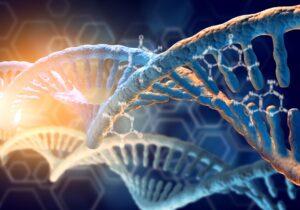How Toxic are Metals in the Body?
by Vanita Dahia
Toxicity of heavy metals can be damaging to health. Heavy metals are naturally occurring elements found in multiple industrial, domestic, agricultural, medical, and technological applications. Toxic levels of metals may be potentially harmful to the body affecting neurological, endocrine, metabolic and immune systems.
Their toxicity depends on several factors including the dose, route of exposure, and chemical species, as well as the age, gender, genetics, and nutritional status of exposed individuals. Because of their high degree of toxicity, arsenic, cadmium, chromium, lead, and mercury rank among the priority metals that are of public health significance. They are classified as human carcinogens (known or probable) according to the Environmental Protection Agency and the International Agency for Research on Cancer.
High levels lead to an increase in Reactive Oxygen Species (ROS) that damage proteins, lipids and DNA. They also form tight bonds with the essential element selenium, reducing its bioavailability for enzymes essential for thyroid hormone synthesis and activation.
Some metals are much more toxic than others. The form of a metal may be more harmful such as an organic versus an inorganic metal compound. How a person is exposed can influence the amount of metal absorbed and the part(s) of the body that are affected. For example, a metal that does little when it is held in someone’s hand, or is only moderately harmful and poorly absorbed when swallowed, may be much more toxic and cause severe lung damage when its vapours are inhaled.
Where do we get heavy metal exposure from?
Heavy metals are naturally occurring elements found in the Earth’s crust. Some, like iron and zinc, are essential for human health in small amounts. However, in larger amounts, they can become toxic.
Here are some of the most common sources of heavy metal toxicity:
Environmental: Mining and smelting: These activities release heavy metals into the air and water, which can contaminate soil, plants, and animals
Air pollution: Coal-burning power plants and other industrial facilities can release heavy metals into the air, which can then be inhaled or deposited on food and water.
Water pollution: Industrial waste, runoff from contaminated land, and acid rain can all pollute water with heavy metals.
Occupational: People who work in certain industries, such as metalworking, battery manufacturing, and painting, are at risk of exposure to heavy metals.
What does it feel like to have a heavy Metal Toxicity?
Signs and symptoms vary and may include:
- Chronic pain and fatigue
- Brain fog – state of forgetfulness and confusion
- Chronic infections such as Candida
- Gastrointestinal complaints, such as diarrhoea, constipation, bloating, gas, and indigestion
- Food allergies
- Dizziness
- Migraines and/or headaches
- Mood swings, depression, and/or anxiety
- Nervous system malfunctions – burning extremities, numbness, tingling, paralysis, and/or an electrifying feeling throughout the body
In the world of increasing metal exposure although chelation therapy is an important tool in fighting metal storage disorders yet lack of larger clinical trials still offers controversy on its clinical therapeutic benefits.
Employing combination therapy with more than one chelating agent and or prescribing antioxidants or nutraceuticals should be more seriously considered as crucial recommendations of chelation therapy.
Test for Metal Toxicity
What is your metal toxic load?
Testing for metals in the body is performed using various biological samples, each offering a distinct window of exposure.
Blood tests primarily reflect recent or acute exposure, as many metals clear from the bloodstream quickly (e.g., arsenic, elemental mercury), making them essential for diagnosing immediate toxicity.
Urine tests measure the amount of metals being excreted and are useful for assessing recent exposure and the body’s overall burden of certain metals (e.g., cadmium, inorganic mercury, and post-chelation provocation tests).
Hair analysis is a non-invasive method that captures metal incorporation into the growing keratin structure, providing a record of chronic or past exposure over weeks to months, although results can be affected by external contamination and lack standardization, making interpretation complex .
Saliva testing is less common but is sometimes used to assess the release of metals from dental work, such as amalgam fillings. The choice of sample—urine, hair, saliva, or blood—depends critically on the metal being tested and whether the aim is to assess acute toxicity, long-term accumulation, or excretion effectiveness.
Measuring both essential trace metals (like zinc and copper) and toxic heavy metals (like lead, mercury, and cadmium) is vital because it allows clinicians to diagnose and monitor metal poisoning, assess nutritional deficiencies, and guide detoxification or chelation therapies before severe, long-term damage to the neurological, renal, or immune systems occurs.
Educational Webinar
How Toxic are Metals in the Body?
The body needs minerals for all biochemical process but does not need metals as they accumulate in the organs and can be dangerous to the body.
Heavy metals can enter the body through the skin or by inhalation or ingestion. The body is exposed to heavy metals on a daily basis in the fumes we inhale like petrol, industrial fumes, pesticides to the metals we consume like water delivered in copper pipes or medications.
Heavy metals occur naturally in the environment. Arsenic, mercury, cadmium and lead are the four most toxic metals. Acute or chronic exposure of heavy metals can lead to numerous health conditions affecting various body systems including heart, immune, immune and nervous system.
Toxic metals have detrimental effects, even at minute levels, but the effects may vary with degree of exposure and an individual’s metabolism and detoxification capacity.
Learning Outcomes
In this webinar, you will learn:
➡️ Nuts and bolts of metals
➡️ Impact of heavy metal toxicity in the body
➡️ How to measure toxic levels
➡️ How to detoxify and chelate heavy metals from the body




